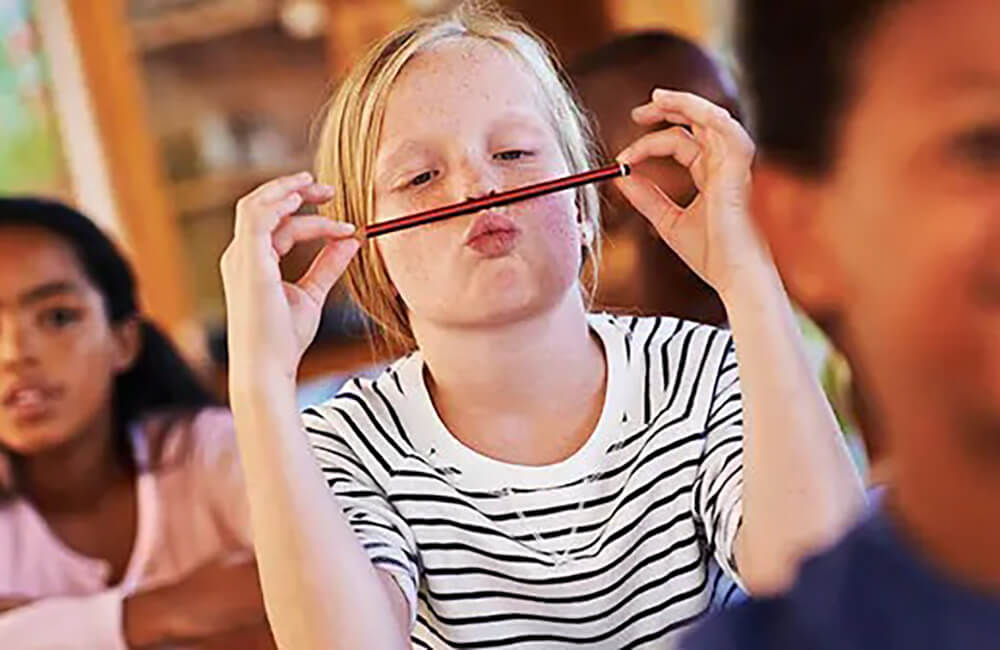It is an unfortunate truth that gifted children often get inaccurately diagnosed with conditions such as ADHD, Obsessive Compulsive Disorder, Oppositional Defiant Disorder, and mood disorders.
The most common misdiagnosis of gifted children tends to be attention-deficit-hyperactivity-disorder, owing to the fact that the two conditions share a number of overlapping characteristics. Some of these include:
- restlessness,
- moving rapidly from task to task,
- not paying attention,
- excessive talking and interrupting,
- frequently blurting out answers,
- impulsivity,
- being the center of attention,
- poor frustration tolerance/impatience in the classroom, on the playground, in sports, and other social situations.
Children who exhibit these behaviors might get referred to ADHD-specific assessments where they can be falsely diagnosed. The real problem arises when they may be recommended an ADHD-focused behavioral plan and medication even though they don’t actually have the condition.
There are plenty of reasons why a child may exhibit the above-mentioned behaviors. They may be overexcitable, gifted, depressed, anxious, or may simply have a low IQ for their age. Jumping to conclusions is dangerous, especially when it comes to the diagnosis of mental health disorders.
The misdiagnosis of exceptionally bright children continues to occur, and it is our responsibility as parents, teachers, and guardians to not let that happen.
Giftedness and ADHD — A Thin Line
As we learn more about gifted kids, we realize that their blurting out answers, moving rapidly from task to task, not paying attention, not following directions, excessive talking, etc. may be more a reflection of their superior intelligence, creativity, higher cognitive functioning, boredom, and intense need to obtain and share information — not ADHD.
We tend to think that kids who are gifted are good at things across the board. The truth is that they can be exceptionally good at one thing, and really bad at the other. Schools often don’t know what to do in situations like these.
It is imperative that teachers, parents, clinicians, and pediatricians assess the child’s intellectual functioning and personality traits as part of the assessment to better determine if the child is gifted or ADHD.
When diagnosing depression, anxiety, bipolar disorder, obsessive compulsive disorder, and oppositional defiant disorder in some children, it is essential to pay attention to the typical personality traits of gifted children including:
- exceptional creativity,
- high emotional intensity,
- emotional and physical sensitivities,
- insatiable curiosity,
- questioning,
- a drive to understand and master things,
- overexcitabilities.
The potential of misdiagnosis of giftedness as attention-deficit-hyperactivity-disorder exists, but so does the potential for a dual diagnosis.
Understanding Twice Exceptionality (2C)
As mentioned above, it is possible that some children might get diagnosed with both a learning disability and giftedness at the same time — they are referred to as twice-exceptional or 2c.
Gifted kids typically have advanced cognitive ability than the norm. Their high functioning ability can be seen in the domains of academics, performing arts, visual arts, math, literature, engineering, and leadership ability. When a learning disability creeps into the picture things can get very confusing for the child, and also for the parents and teachers.
The challenge with diagnosing such a condition is that there are no metrics for measuring non-data-driven qualities such as being good at art, leadership, or creativity for example. This blurs the line between giftedness and attention-deficit-hyperactivity-disorder, making it harder to tell the two apart.
2c children have contradictory experiences. One of three things can happen:
- Their strengths outweigh their challenges: People don’t recognize the challenges.
- Their challenges outweigh their strengths: The educational focus shifts from advanced abilities/passions, to remediation and fixing everything that’s wrong.
- They have an equal amount of challenges and strengths: These children appear to be doing fine but they may actually be struggling as they receive no support for their strengths or remediation for their weaknesses.
Children who fall into both camps and will have dual issues and a dual diagnosis. The job of psychologists and therapists is to tease apart the differences and overlap of these complicated behavioral presentations.
The SENG organization (Supporting Emotional Needs of the Gifted) identifies and provides us with an excellent list of factors and interventions to consider before we make an ADHD referral to better clarify if the child may be gifted and/or has a learning disability. Dr. Hahn at Tufts Medical Center also provides us with excellent guidelines to better distinguish between the two.
Dabrowski’s Overexcitabilities
Kazimierz Dabrowski’s theory of positive disintegration outlines five common areas in which children exhibit intense behaviors referred to as overexcitabilities — psychomotor, sensual, intellectual, imaginational, and emotional.
Gifted children typically experience multiple overexcitabilities, however, one is usually more dominant. This is one of the reasons why gifted and ADHD characteristics overlap.
The Risks of False ADHD Diagnosis
When gifted children are misdiagnosed with attention-deficit-hyperactivity-disorder, it almost always happens without any consideration for their typical personality traits and behavior. This gives rise to undue expectations without consideration for other characteristics that define their human experience.
The consequences of this can be seriously detrimental to their growth. They might develop self-esteem-related troubles, social challenges, and asynchronous development. Most importantly, they may be medicated for mental illnesses that they do not have.
Is My Child Gifted or ADHD?
This is a question that gets asked a lot. There’s no checklist-based test that can accurately assess this situation. The only way to do it is by conducting gold standard assessments that include comprehensive testing, behavioral observations, adult and self-reports, and assessment interventions that can help us tease apart the two conditions.
This very helpful resource facilitates a better understanding of how certain strengths and characteristics of gifted children can be easily misunderstood, misinterpreted, and misdiagnosed in gifted kids as mood disorders and/or oppositional defiant disorder.
A highly recommended and informative book can further guide parents, teachers, clinicians, and pediatricians on how to better respond, assess, and intervene with gifted children that minimize the potential for misdiagnosis of gifted kids.
